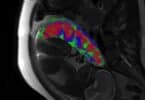When you think about pregnancy, you might picture a growing baby, a swelling belly, and all the cravings and emotions that come with it. But behind the scenes, there’s a powerhouse organ working overtime to keep that baby alive and healthy: the placenta.
This temporary organ is critical to life itself — connecting the developing baby to the mother for nutrients, oxygen, and waste removal. Despite its vital role, the placenta has remained something of a mystery to scientists. Now, a new study is helping to lift the veil, revealing how tiny molecules called small non-coding RNAs (sncRNAs) act as critical regulators inside the placenta. The study titled “Profiling the cell-specific small non-coding RNA transcriptome of the human placenta” was conducted by a collaborative team of researchers from several Canadian institutions, including the University of British Columbia and BC Children’s Hospital.
The findings could open doors to better understanding pregnancy complications like preeclampsia, fetal growth restrictions, and even future disease risks. Here’s what researchers discovered — and why it matters to every parent-to-be.
The placenta is often called the “forgotten organ” because once the baby is born, it’s typically discarded without much thought. But its importance is enormous: it’s the interface between mother and child, handling everything from oxygen delivery to hormone production.
Problems with the placenta can lead to serious issues like:
- Preeclampsia (dangerous high blood pressure during pregnancy)
- Stillbirth
- Low birth weight
- Preterm birth
Despite its important role, scientists still have much to learn about how the placenta grows and functions at the cellular level. Understanding its inner workings could not only help prevent pregnancy complications but also reveal how conditions like obesity, diabetes, and even cancer may take root very early in life.
What Are Small Non-Coding RNAs (sncRNAs)?
At the heart of this new research are tiny molecules called small non-coding RNAs. Unlike traditional RNA, which carries instructions from DNA to make proteins, sncRNAs don’t build anything themselves. Instead, they act more like managers or traffic controllers, telling other molecules when to start or stop their work.
There are several types of sncRNAs, including:
- miRNAs (microRNAs)
- piRNAs (Piwi-interacting RNAs)
- rRNAs (ribosomal RNAs)
- snRNAs (small nuclear RNAs)
- snoRNAs (small nucleolar RNAs)
- tRNAs (transfer RNAs)
- scaRNAs (small Cajal body-specific RNAs)
Each type has its own specialty, but they all share a common goal: fine-tuning the cell’s machinery to ensure everything runs smoothly.
And in the placenta, where different types of cells must coordinate perfectly, these RNAs are essential.
I know this feels very technical but stay with me because this study, on a larger level, is an important stepping stone for bigger things.
Until now, most studies looked at the placenta as a whole. But the placenta isn’t just one kind of tissue — it’s a collection of different cell types, each with unique roles.
To get a clearer picture, researchers separated four major types of placental cells:
- Cytotrophoblasts (CTBs): Builders that form new tissue and anchor the placenta.
- Stromal Cells (SCs): The support system, providing structure.
- Endothelial Cells (ECs): Vascular engineers, creating blood vessels.
- Hofbauer Cells (HBCs): Specialized immune cells.
Then they mapped the sncRNAs in each cell type. This approach was like listening to a symphony — but instead of hearing just the combined sound, you could pick out the flutes, violins, and drums individually.
What They Found: Key Takeaways
1. Different Cells, Different RNA Profiles
Each cell type had its own “fingerprint” of sncRNA activity. Even though no sncRNA was found exclusively in just one cell type, the levels of certain RNAs varied significantly.
- Hofbauer cells stood out the most — their RNA profiles were the most unique.
- Stromal and cytotrophoblast cells were more similar to each other.
- Some sncRNAs commonly found in placenta-related problems, like preeclampsia, also showed cell-specific differences.
Why this matters: Understanding these differences could help identify early warning signs of pregnancy complications — before symptoms appear.
2. The Placenta and Cancer: Strange Bedfellows
Surprisingly, many sncRNAs active in cytotrophoblasts are also found in cancer cells.
Why? Both the placenta and cancer share some behaviors:
- They grow quickly.
- They invade surrounding tissues.
- They hijack blood vessels to feed themselves.
Studying sncRNAs in placental cells could therefore not only help improve pregnancy outcomes but also shed light on cancer biology.
3. Baby’s Sex May Affect Placental RNA Activity
Researchers noticed small but important differences in sncRNA activity depending on whether the placenta belonged to a male or female fetus.
For example, some piRNAs and miRNAs were more active in male-associated placentas. This might help explain why male fetuses are sometimes at higher risk for pregnancy complications like preterm birth.
4. Whole Placenta Studies May Miss Important Details
When researchers compared the whole placenta samples to individual cell types, they realized whole tissue studies might be painting an incomplete picture.
The RNA signals from dominant cell types can “drown out” the signals from rarer, but still important, cells.
Bottom line: Future research (and future medical tests) need to consider which cells they’re looking at — not just the placenta as a whole.
This study is more than just a scientific curiosity. It’s laying the groundwork for real-world applications that could change the way we monitor and care for pregnancies.
Potential Benefits Include:
- Earlier diagnosis of pregnancy complications by measuring sncRNAs in maternal blood.
- Personalized prenatal care based on the baby’s sex or risk factors.
- Better understanding of how early-life health risks develop.
- Improved placental models (like lab-grown organoids) to test treatments safely.
And because sncRNAs are stable and easy to detect, they might become valuable biomarkers for pregnancy monitoring — like a simple blood test to check the health of the placenta.
Of course, no study is perfect. The researchers point out several hurdles:
- They had a relatively small sample size, especially for first-trimester placentas.
- Technical limitations in isolating certain cell types (like the tricky syncytiotrophoblasts).
- Differences in RNA quality depending on sample processing.
Still, even with these challenges, the findings offer an exciting glimpse into the placenta’s inner world — and hint at even bigger breakthroughs to come.
The placenta isn’t just a passive connection between mother and baby — it’s an active, dynamic organ, full of specialized cells working together through precise genetic regulation.
By mapping the small non-coding RNAs inside individual placental cells, scientists have taken a huge step toward understanding how pregnancies thrive — and why sometimes they don’t.
This research reminds us that sometimes, the biggest stories in human biology are written in the smallest scripts. As science continues, the hope is clear: healthier pregnancies, healthier babies, and a deeper understanding of where life’s journey truly begins.
Related Articles:
- Exclusive Human Milk Diet Offers Lasting Benefits for Preterm Babies
- What the Elimination of the Newborn Genetic Disorder Committee Means for Children’s Health
- Do Twin Births Increase the Risk of Heart Disease for New Moms?
- Updated multiple times every year, America’s pregnancy bible answers all your questions
- When can I take an at-home a pregnancy test? How can I eat for two if I’m too queasy to eat for...
- Say hello to simplicity and embrace your pregnancy with more ease and assurance with The Simplest...
- Becoming pregnant for the first time can be filled with anxiety and stress, as there is so much to...







